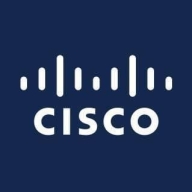

Trend Vision One and Cisco XDR are competing products in the cybersecurity landscape. Cisco XDR appears to have the upper hand with its advanced features and higher ROI, making it a worthwhile investment for organizations seeking comprehensive security.
Features: Trend Vision One offers threat intelligence features providing in-depth analytics, effective incident response, and comprehensive security with threat management solutions. Cisco XDR enhances network visibility, provides automated threat detection and response, and integrates with various systems to strengthen security posture.
Room for Improvement: Trend Vision One could improve its user interface for better efficiency, enhance integration capabilities with third-party applications, and reduce the complexity of its advanced features setup. Cisco XDR could simplify its initial setup, improve the granularity of threat data for better analysis, and offer more flexible deployment options to cater to different organizational needs.
Ease of Deployment and Customer Service: Deploying Trend Vision One is generally simple, supported by reliable customer service that facilitates smooth transitions. Cisco XDR, while offering more extensive features, involves a complex deployment process. However, its customer service excels in managing these complexities and supports intricate system integrations effectively.
Pricing and ROI: Trend Vision One is budget-friendly with a lower setup cost, attracting organizations looking for cost-effective solutions. It offers good ROI due to its effective threat management capabilities. Cisco XDR, despite a higher initial cost, offers advanced features that justify the investment, delivering superior long-term value and ROI for organizations that prioritize comprehensive security.
| Product | Market Share (%) |
|---|---|
| Trend Vision One | 3.7% |
| Cisco XDR | 2.0% |
| Other | 94.3% |


| Company Size | Count |
|---|---|
| Small Business | 41 |
| Midsize Enterprise | 11 |
| Large Enterprise | 34 |
Cisco XDR delivers an advanced threat detection and response experience through integration with Cisco's security suite, offering enhanced visibility, intelligence, and automation for network protection and system evaluations.
Cisco XDR integrates with Cisco Meraki and Splunk, excelling in threat intelligence and zero-day attack detection. Its automated response features provide crucial support in managing extensive networks, while the comprehensive log management facilitates detailed troubleshooting. Dashboards assist in system evaluation for effective gap mitigation. Despite its licensing complexity and upfront costs, it remains a key tool for Security Operations Center analysts and internet service providers, helping isolate threats and ensuring consistent security monitoring.
What features make Cisco XDR stand out?Cisco XDR is widely implemented in sectors requiring robust network management and monitoring. Organizations use it alongside Cisco Firepower Threat Defense and Meraki for comprehensive security measures, benefiting global customers and internet service providers for traffic and routing insights across devices and data centers.
Trend Vision One offers comprehensive protection for endpoints, networks, and email with centralized visibility. It is valued for its attack surface management, real-time threat detection, integrated management, ease of deployment, and user-friendly interface.
Trend Vision One provides a sophisticated security platform combining endpoint, network, and email protection with features like virtual patching and advanced AI capabilities. Its centralized management and integration with platforms like Office 365 and Azure make it an attractive option for organizations needing streamlined workflows and efficient risk management. While it boasts robust integrations and ease of use, enhancements are needed in reporting, tool integration, and reducing false positives. Users call for better support infrastructure, faster response times, and improved threat intelligence capabilities. Despite some complexity, its AI and ML features significantly enhance threat detection and response.
What Features Define Trend Vision One?
What Benefits Should Users Look For?
Trend Vision One is implemented in industries that require endpoint protection, ransomware defense, and incident response, being flexible for both on-premises and cloud environments. It is used to monitor servers, networks, and endpoints, providing features like email protection, behavioral detection, and threat visibility. Organizations benefit from AI and ML, improving their security posture and response capabilities.
We monitor all Extended Detection and Response (XDR) reviews to prevent fraudulent reviews and keep review quality high. We do not post reviews by company employees or direct competitors. We validate each review for authenticity via cross-reference with LinkedIn, and personal follow-up with the reviewer when necessary.